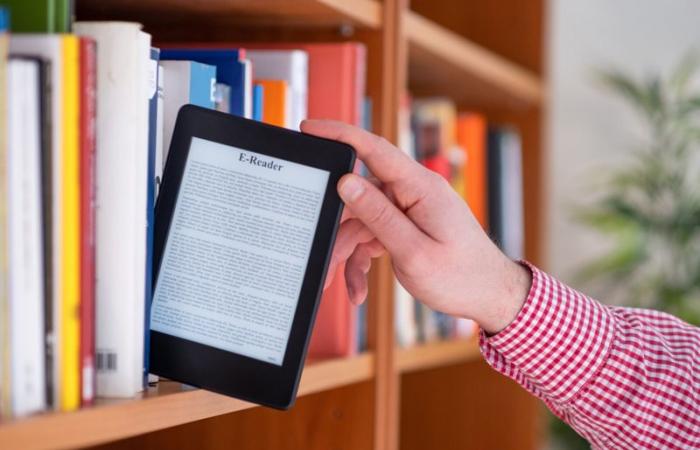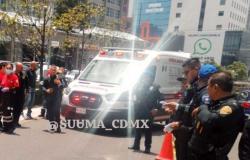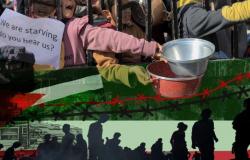In Rural Society, the traditional also gave way to the new with digital books. What are its many characteristics.
Can you imagine being able to carry a complete library within a single device? That alternative became a reality thanks to e-books, and at the Tucumán Book Fair that universe of possibilities was opened to all its attendees.
These digital and in some cases improved versions of traditional books can be read on electronic devices such as tablets or smartphones.
E-books can also contain text, images, links and even multimedia content, with the advantage of portability, instant accessibility and the ability to store a large number of books in one place.
To provide a look at this world that is gaining more and more followers, the editors Alexander Rivadeneira bit ink and Constance Toro of Libros Tucumán, spoke with the coordinator of the Escriva community, Marco Rossi Peraltathey presented all their knowledge on the subject.
“The novelty of thinking about the e-book in a space like this also gives recognition to the object itself,” the speakers acknowledged in dialogue with LA GACETA.
Her CARACTERISTICS
“Being a digital object, the texts are expressed in pixels, on screens, in circuits, in lines of code,” Alexander described the e-book, to start talking from the most basic for those who have not yet approached this form of read.
ODDS. This format has more than one format available.
While Constanza added: “they are designed to be read from cover to cover and usually have a deeper and more continuous focus on a topic than a physical format.”
Marcos went a little further and wanted to highlight that there is no single edition of a digital book. “Today, different forms of e-books coexist. On the one hand there are e-readers with readers like the Kindle, which try to simulate and resemble a paper book in an impressive way. In that sense, Amazon is the great bookstore and the great market for this option.”
“It also coexists with other formats such as EPUB that allows you to work with books that include audios, images, videos and that are readable on cell phones and computers,” he added.
Tucumán Book Fair: culture, art and gastronomy come together in the Rural
And he stated: “In addition, PDF formats continue to circulate and are chosen in many cases, which in general increasingly have more visual support and a more careful and colorful graphic design.”
Its advantages
As the possibilities of digital books are not few, their virtues are also numerous.
“One of the important points to keep in mind is that they are a great alternative to paper, for some important reasons. Nowadays it has become increasingly difficult to print a book, especially for small publishers,” said Rivadeneira.
FOR THE MOST NOSTALGIC. There are e-book options similar to the paper format with the aim of being more friendly to the traditional reader.
“As for this, in addition it has a lot of dissemination potential and a lot of editing potential as a digital object,” he added.
“On the other hand, we must highlight the versatility of its formats, because for example it exists in PDF, which is perhaps the best-known type of digital document and within it you can not only write, but you can store drawings or change the layouts of the text in the page different from that of the paper,” he added.
“Meanwhile, there are other formats such as the I-pad that allow adaptability to the different screens on which they are viewed,” Rivadeneira listed.
“We can also carry many books on a single cell phone or a small, light reader and have them available anytime, anywhere,” Toro added to the topic.
In turn, at that point he remarked: “contrary to popular belief, we rest our eyes because we can enlarge the font and the line spacing; On the other hand, you can add bookmarks, notes and do searches in seconds, in addition to searching for terms and translating.”
Rossi, for his part, said: “for practical or educational content they are superlative.”
“They help you enter a new way of reading that, although it is still in development and exploration, is also full of surprises that invite us to rethink what makes a book a book,” he detailed.
At the same time, he highlighted a key point for choosing it: the digital book is cheaper.
“By eliminating everything related to printing from the equation of the editorial process, the cost becomes much cheaper, and there are even initiatives of publishers with free access, something that would be totally impossible in paper format,” mentioned the expert.
Social construction
When asked about the reasons why today an increasing community chooses to work and read e-books, Rossi indicated: “we are interested in the interactivity that the digital book allows, since with a single click the reader can contact the author or with the publisher.”
“This way you can make contributions to the construction of a book and it becomes a more collective writing” – he commented and mentioned – “the author can also revert his work several times, adding content, improving it, providing solutions in the case of the most complex books.” practical or teaching manuals.
“In this way books are constructed in a more social way. While the diversity of formats it supports opens the possibilities of interaction and integration of an internet book to infinity,” said Marco.
Why discover them
Although on the premises of the Rural Society, the invitation to immerse yourself in digital books was formally made, it is good to review this invitation for everyone.
“I would invite more people for the same reason that I would invite more people to read paper books,” Constanza considered.
“There we find what we are looking for, light or deep readings, for leisure or work, that make us laugh or cry, that make us fall in love, learn, feel like it,” he specified.
Alexander, for his part, asked that the format not be underestimated before knowing it.
“Although the physical book has something irreplaceable, which I recognize and seems fundamental to me, the ebook is one more extension or manifestation of what digital is and therefore has the potential to grow a lot,” he reflected.
“Its characteristics can lead it to become something even more immersive since it is not just words on a screen, but it is just one more part of a bigger thing. Plus, it can also be a lot of fun to have something like that in your hand,” he concluded.
“It is a different way of reading in which you can enjoy formats that cannot exist in the physical book, since they enable interactivity,” said Rossi.
To then finish: “At the end of the road it will be the author’s dedication, the duration that the book needs, the time and his production work, which will be the hook.”
What can you do today
– At 2:30 p.m.: the capital’s municipality presents children’s theater and stories.
– At the same time: romance literature for teenagers, with bookstagrammers Agustina Rivadeneira, Micaela Avellaneda and Milagros González.
– At 3:00 p.m.: “Little Luis and Magic Objects” by Alejandra Burzac Sáenz is presented.
– At 3:30 p.m.: drawing workshop “Illustrated animation with stop motion technique – Production of fanzines – Creation of characters – Caricatures”, led by César Carrizo.
– At the same time, presentation of “Stories by the stove”, by María Julia Lisi.
– At 4:00 p.m.: discussion “Poetry on networks vs. illustrated poetry,” with Marx Bauzá, Ricardo Gandolvo and Horacio Baca.
– At 4:30 p.m.: presentation of the books “Sabores de mi vida”, by Víctor Medrano, and “Butterfly mutants”, by Eliana Costilla. Organized by the Municipality of Famaillá.
– At 5:00 p.m.: narrative table with Dani Escobar, Santiago Garmendia and Alejandro Nicolau.
– At 5:30 p.m.: presentation of “Mama Antula”, by Honoria Zelaya de Nader.
– At 5:45 p.m.: “Literary writing as a protagonist in secondary school.” María Laura Rojas Moreno, María de los Ángeles Luján and Gustavo Luján dialogue.
– At 6:00 p.m.: reading by numerous authors and “Don Quixote” literary workshop.
– At the same time, Música Famaillá is presented.
– At 6:10 p.m.: the book “Pirincho Juan” by Juan Gelosi is presented. Cecilia Canevaria and Ana Levy Hynes moderate.
– At 7:00 p.m.: poetry table with Marcos Rossi Peralta, Lourdes Jiménez Ortiz, Horacio Baca and Nacho Jurao.
– At 8 p.m.: poetry table with Gastón Córdoba, Pablo Toblli, Natalia Trouvé and Fernando Flores.






